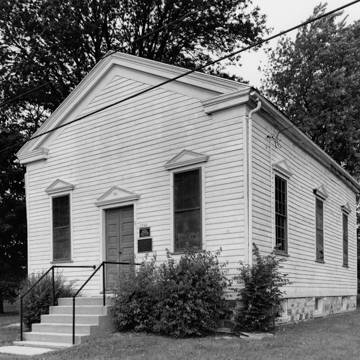In 1936, when the Painesville Chapel stood abandoned and derelict, architect Alexander Guth, working for the Historic American Buildings Survey (HABS), declared the chapel “a veritable bit of New England transplanted to Wisconsin,” thereby sparking a restoration campaign. The original congregants’ descendants formed the Painesville Memorial Association, which restored the building. Guth, however, was mistaken: the chapel’s roots lay in Germany, not in New England. It was built by a small group of German Freethinkers, the first Freie Gemeinde (Free Congregation) in Wisconsin. These agnostic intellectuals, dedicated to individual freedom of thought, named their chapel after revolutionary thinker Thomas Paine. The group petered out after 1900, but the chapel survives as one of the last Freie Gemeinde halls in the state.
To Guth, the building’s simple Greek Revival design evoked New England, but the German congregants likely chose the style for its popular association with democracy and free thought. Small and rectangular, the clapboard-clad chapel has a front-gabled roof with characteristic eave returns and triangular pediments over the door and windows. Inside, the building appears as it was described in 1876: portraits of Benjamin Franklin, Thomas Paine, and geographer Alexander von Humboldt hang on the walls, overlooking the original pulpit, pews, and stove. The memorial association rebuilt the foundation and added concrete front steps and electric lighting.


